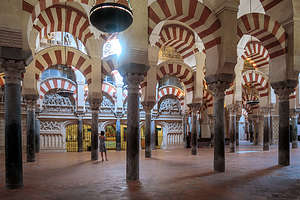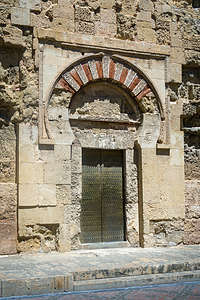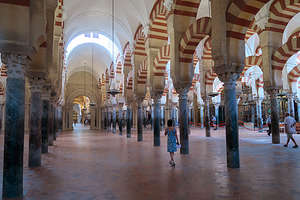- Home
- About
- Map
- Trips
- Bringing Boat West
- Migration West
- Solo Motorcycle Ride
- Final Family XC Trip
- Colorado Rockies
- Graduates' XC Trip
- Yosemite & Nevada
- Colorado & Utah
- Best of Utah
- Southern Loop
- Pacific Northwest
- Northern Loop
- Los Angeles to NYC
- East Coast Trips
- Martha's Vineyard
- 1 Week in Quebec
- Southeast Coast
- NH Backpacking
- Martha's Vineyard
- Canadian Maritimes
- Ocracoke Island
- Edisto Island
- First Landing '02
- Hunting Island '02
- Stowe in Winter
- Hunting Island '01
- Lake Placid
- Chesapeake
- Provincetown
- Hunting Island '00
- Acadia in Winter
- Boston Suburbs
- Niagara Falls
- First Landing '99
- Cape Hatteras
- West Coast Trips
- Burning Man
- Utah Off-Roading
- Maui
- Mojave 4WD Course
- Colorado River Rafting
- Bishop & Death Valley
- Kauai
- Yosemite Fall
- Utah Off-Road
- Lost Coast
- Yosemite Valley
- Arizona and New Mexico
- Pescadero & Capitola
- Bishop & Death Valley
- San Diego, Anza Borrego, Joshua Tree
- Carmel
- Death Valley in Fall
- Yosemite in the Fall
- Pacific Northwest
- Utah Off-Roading
- Southern CA Deserts
- Yosemite & Covid
- Lake Powell Covid
- Eastern Sierra & Covid
- Bishop & Death Valley
- Central & SE Oregon
- Mojave Road
- Eastern Sierra
- Trinity Alps
- Tuolumne Meadows
- Lake Powell Boating
- Eastern Sierra
- Yosemite Winter
- Hawaii
- 4WD Eastern Sierra
- 4WD Death Valley +
- Southern CA Deserts
- Christmas in Tahoe
- Yosemite & Pinnacles
- Totality
- Yosemite & Sierra
- Yosemite Christmas
- Yosemite, San Diego
- Yosemite & North CA
- Seattle to Sierra
- Southwest Deserts
- Yosemite & Sierra
- Pacific Northwest
- Yosemite & South CA
- Pacific Northwest
- Northern California
- Southern Alaska
- Vancouver Island
- International Trips
- Index
- Tips
- Books
- Photos/Videos
- Search
- Contact
Cordoba and the Mezquita, Spain
Saturday, June 1, 2019 - 8:45pm by Lolo
100 miles and 2 hours from our last stop - 1 night stay
Travelogue
 Flamenco dancers in CordobaWhile the Alhambra is the most visited tourist attraction in Spain with over 2 million visitors per year, the Mezquita in Cordoba comes in second, with approximately 1.5 million annual visitors. Always intrigued by photos of its rhythmic series of giant red-and-white colored arches, we decided to add ourselves to the tourist tally.
Flamenco dancers in CordobaWhile the Alhambra is the most visited tourist attraction in Spain with over 2 million visitors per year, the Mezquita in Cordoba comes in second, with approximately 1.5 million annual visitors. Always intrigued by photos of its rhythmic series of giant red-and-white colored arches, we decided to add ourselves to the tourist tally.
As I have mentioned before, European cities are much more camper friendly than those in the states, so we were able to find a campground right in Cordoba, called El Brillante Municipal Camping, in walking distance (1.5 miles) to the Mezquita. Another difference between Spanish and U.S. campground is if you call ahead either a day before or same day and find out they have an available site, they will save it for you without taking down a credit card number. They just trust that you will show up or have the courtesy to call if not.
We arrived at the campground early enough on a Saturday to visit the Mezquita, as it was open until 7 pm on Saturdays. Unlike the Alhambra, tickets for the Mezquita do not have to be purchased in advance, but something made me check their website anyway. Lucky I did, because I found out that the hours for today were different than a normal Saturday because of a special festival in Cordoba. Rather than 7 pm, they would be closing at 2 pm today, which was in about an hour. However, they would be open tomorrow morning at 8:30 am.
 The MezquitaIt was really hot, and the campground pool was not open yet (as it wasn’t technically summer - despite it being well over 90 degrees), so we decided to walk to the historic center near the riverfront, where we could at least enjoy the exterior of the Mezquita and wander through the old city.
The MezquitaIt was really hot, and the campground pool was not open yet (as it wasn’t technically summer - despite it being well over 90 degrees), so we decided to walk to the historic center near the riverfront, where we could at least enjoy the exterior of the Mezquita and wander through the old city.
Along the walk we saw several women of all ages, shapes, and sizes dressed in flamenco outfits. I don’t think they were actually flamenco dancers, but rather just dressed up as part of the festival.
Just to be sure, we went to the Mezquita first to confirm that it was in fact closed. It was. Still there was plenty more to see and do.
Before I describe our experience in Cordoba, I think it would be helpful to know a little more about the history of this incredible city. I wish I had done more homework before our visit rather than waiting until writing this afterwards. Anyway, for what it’s worth, here is my very, very brief history of Cordoba:
 Roman bridge over the Guadalquivir RiverCordoba was first founded as a Roman colony in 152 BC, and served as the capital of Rome’s Baetica province (what is today Andalucia). There are several remnants of its Roman past to explore, such as the Roman bridge over the Guadalquivir River and the remains of a first-century Roman temple.
Roman bridge over the Guadalquivir RiverCordoba was first founded as a Roman colony in 152 BC, and served as the capital of Rome’s Baetica province (what is today Andalucia). There are several remnants of its Roman past to explore, such as the Roman bridge over the Guadalquivir River and the remains of a first-century Roman temple.
After the Roman Empire fell in the 5th century AD, the Visigoths took over the city for awhile until it was conquered by Muslim invaders in 711, who turned Cordoba into the Islamic capital of the entire Iberian peninsula.
Every good Muslim city, especially one of such prominance, needs an impressive mosque to show off its power, culture, and influence - hence, the Mezquita.
Construction of the Mezquita (Spanish for “mosque”) began in 785, under the rule of Abd al Rahman I, and lasted for about 200 years. Later caliphs enlarged the mosque, adding a new minaret, orange tree courtyard, outer naves, and other features.
 Mezquite (Take 2)During the 10th century, Cordoba was the largest city in Western Europe, and also one of the most impressive, with dazzling mosques, libraries, a university, and highly skilled artisans in textiles and glazed tiles. During that time Muslims, Christians, and Jews in the city coexisted quite peacefully.
Mezquite (Take 2)During the 10th century, Cordoba was the largest city in Western Europe, and also one of the most impressive, with dazzling mosques, libraries, a university, and highly skilled artisans in textiles and glazed tiles. During that time Muslims, Christians, and Jews in the city coexisted quite peacefully.
However, Christians were not just sitting idly by while Muslims ruled the Iberian peninsula. The Spanish Reconquista (Christian attempt to take back the Iberian peninsula from the Muslims) lasted almost from the time Muslims arrived in the 8th century until Grenada fell in 1492. Cordoba was recaptured in 1236 by King Ferdinand III, and the Mezquita began to be used as a church.
Fortunately for all of us today, the Christian conquerors did not destroy the Islamic features of the mosque, but simply built their own Renaissance cathedral inside it. As a result, the Mezquita is a remarkable example of both Moorish and Renaissance architecture.
 The Mezquita's forest of Islamic red-and-white archesHopefully, that provides a little context for what we would be seeing during our wanderings.
The Mezquita's forest of Islamic red-and-white archesHopefully, that provides a little context for what we would be seeing during our wanderings.
From the Mezquita, we wandered downhill and walked across the Guadalquivir on an the ancient Roman bridge built in the first century AD that once was along the Via Augusta, which connected Rome to Cádiz. While the foundation is the original Roman construction, most of the present structure dates from the Moorish reconstruction in the 8th century. 247 meters in length, it now has 16 arcades. It has been renovated several more times over the last 12 centuries.
After crossing the bridge, we came to the Museum of Al-Andalus Life, which occupies a fortified gate that was built by Christians in the 14th century to protect what was then the Christian city. I looked sadly at the sign saying that it too was closed for the festival.
We made our way back across the bridge, past the Mezquita and along the narrow winding alleyways of the Jewish quarter, dating back to the late Middle Ages. It was so much quieter here, as somehow we had lost all the tourists near the Mezquita. Cordoba is an extremely hot city, but they had it figured out. There was almost constant shade (except high noon) because of the narrowness of the streets and the thick whitewashed walls kept the interior of the buildings relatively cool. Colorful doors and windows and pretty patios behind iron gates helped counter the boring whitewash.
 Lolo in the cathedral portion of the MezquitaOn the way back to the campground, we passed the remains of a first-century Roman temple, which was discovered in the 1950s during a remodeling of City Hall. What remains today are the towering columns and base of what was once a massive temple.
Lolo in the cathedral portion of the MezquitaOn the way back to the campground, we passed the remains of a first-century Roman temple, which was discovered in the 1950s during a remodeling of City Hall. What remains today are the towering columns and base of what was once a massive temple.
Foolishly we thought that we could get a bite to eat on our walk back, but it was only 5:30, way to early for a proper dinner in Spain, especially on a Saturday. We finally gave up, and I am embarrassed to say, went to a McDonalds, just a short distance from our campground. My excuse was that I needed their free internet to load up photos. We had Big Macs and I had a cafe con helado (coffee with ice cream) and Herb had a McCerveza. It was fun - plus it was the only game in town at this hour, which at home is the Early Bird Special.
Cordoba was so hot that we wanted to get our walk and visit to the Mezquita done in the cool of the morning. If we could do that and get back to the campground before checkout at noon, we would move along on our journey north across Spain.
 17th century Baroque-style choirWhen we got to the Mezquita around 8:30, I was a little nervous that it still wouldn’t be open, but there was already a crowd gathering near the entrance gate. The doors opened and we were let into the Patio de los Naranjos (Orange Tree Courtyard), where when this was a mosque, the Muslim faithful would wash before prayer.
17th century Baroque-style choirWhen we got to the Mezquita around 8:30, I was a little nervous that it still wouldn’t be open, but there was already a crowd gathering near the entrance gate. The doors opened and we were let into the Patio de los Naranjos (Orange Tree Courtyard), where when this was a mosque, the Muslim faithful would wash before prayer.
After purchasing our entrance tickets for 10 € - best 10 € I ever spent - we entered the hypostyle prayer hall and were immediately immersed in the forest of red-and-white giant double arches that the Mezquita is famous for. Each of the arches is supported by a marble, granite, or jasper column salvaged from ancient Roman and Visigothic ruins. There are 856 columns in total. It was absolutely breathtaking.
As I mentioned in my brief history, when Cordoba was recaptured in 1236 by King Ferdinand III, they turned the Mezquita into a church. Thankfully, they pretty much left things alone, with the exception of eliminating part of the column hall to make room for a Renaissance cathedral right smack in the middle of the building, surrounded by the forest of Islamic red-and-white arches.
 Mezquita horseshoe-arched Mihrab (prayer niche)It is an amazing comingling of the two religions. However, the nave’s towering Renaissance arches and dome were meant to emphasize the triumph of Christianity over Islam.
Mezquita horseshoe-arched Mihrab (prayer niche)It is an amazing comingling of the two religions. However, the nave’s towering Renaissance arches and dome were meant to emphasize the triumph of Christianity over Islam.
In the 17th century, a Baroque-style choir was added across from the alter, with 109 beautiful mahogany-carved choir stalls, each depicting scenes from the Bible - Mary’s life on one side and Jesus’ life on the other. Above was an incredible barrel-vaulted ceiling, also in the Baroque style.
Continuing on, we left the Christian worship space and once again entered the Islamic world and its equivalent of the church’s high altar - the Mihrab, a horseshoe-arched, beautifully decorated prayer niche set into the wall facing Mecca. It was from here that the imam would read scripture and give sermons.
 Dome above the MihrabThe arch was adorned with shimmering gold tesserae with vegetal motifs and intricate calligraphic bands of quotes from the Quran. Unlike the Christian portion of the Mezquita, where the walls were adorned with paintings were of saints and Jesus, Muslims do not adorn their worship space with human figures.
Dome above the MihrabThe arch was adorned with shimmering gold tesserae with vegetal motifs and intricate calligraphic bands of quotes from the Quran. Unlike the Christian portion of the Mezquita, where the walls were adorned with paintings were of saints and Jesus, Muslims do not adorn their worship space with human figures.
Above the mihrab, was a dazzling dome, built of crisscrossing ribs that create pointed arches all lavishly covered with gold mosaic. It was all absolutely stunning.
We had wanted to climb up the belltower for views of the city, but tickets were already sold out. Just as well. This would allow us to walk back to our campground before noon checkout, so that we could move on to our next destination - Salamanca.
I have to confess to another stop at McDonalds for another cafe con helado and free Wifi to load photos.
Description
 Let's hope the Mezquita doors will open for us todayCordoba was first founded as a Roman colony in 152 BC, and served as the capital of Rome’s Baetica province (what is today Andalucia). There are several remnants of its Roman past to explore, such as the Roman bridge over the Guadalquivir River and the remains of a first-century Roman temple.
Let's hope the Mezquita doors will open for us todayCordoba was first founded as a Roman colony in 152 BC, and served as the capital of Rome’s Baetica province (what is today Andalucia). There are several remnants of its Roman past to explore, such as the Roman bridge over the Guadalquivir River and the remains of a first-century Roman temple.
After the Roman Empire fell in the 5th century AD, the Visigoths took over the city for awhile until it was conquered by Muslim invaders in 711, who turned Cordoba into the Islamic capital of the entire Iberian peninsula.
Every good Muslim city, especially one of such prominance, needs an impressive mosque to show off its power, culture, and influence - hence, the Mezquita.
Construction of the Mezquita (Spanish for “mosque”) began in 785, under the rule of Abd al Rahman I, and lasted for about 200 years. Later caliphs enlarged the mosque, adding a new minaret, orange tree courtyard, outer naves, and other features.
 Lolo wandering along the forest of Islamic red-and-white archesDuring the 10th century, Cordoba was the largest city in Western Europe, and also one of the most impressive, with dazzling mosques, libraries, a university, and highly skilled artisans in textiles and glazed tiles. During that time Muslims, Christians, and Jews in the city coexisted quite peacefully.
Lolo wandering along the forest of Islamic red-and-white archesDuring the 10th century, Cordoba was the largest city in Western Europe, and also one of the most impressive, with dazzling mosques, libraries, a university, and highly skilled artisans in textiles and glazed tiles. During that time Muslims, Christians, and Jews in the city coexisted quite peacefully.
However, Christians were not just sitting idly by while Muslims ruled the Iberian peninsula. The Spanish Reconquista (Christian attempt to take back the Iberian peninsula from the Muslims) lasted almost from the time Muslims arrived in the 8th century until Grenada fell in 1492. Cordoba was recaptured in 1236 by King Ferdinand III, and the Mezquita began to be used as a church.
Fortunately for all of us today, the Christian conquerors did not destroy the Islamic features of the mosque, but simply built their own Renaissance cathedral inside it. As a result, the Mezquita is a remarkable example of both Moorish and Renaissance architecture.
It is truly a fascinating building, famous for the forest of pillars and arches inside the main hall. It is the second most visited tourist attraction in Spain (after the Alhambra) with over 1.5 million visitors per year.
- ‹ previous
- 9 of 20
- next ›
Cordoba and the Mezquita location map in "high definition"
Javascript is required to view this map.
